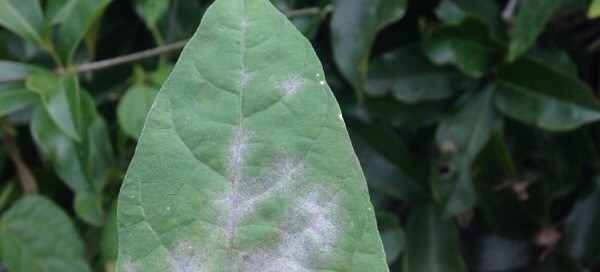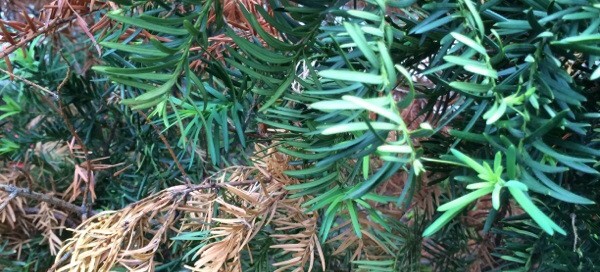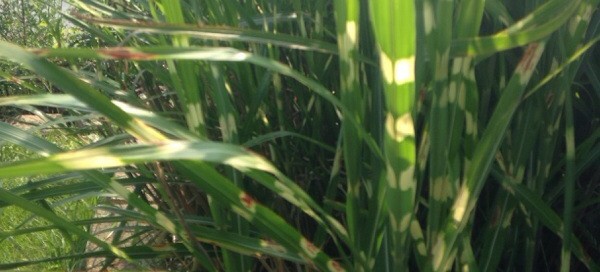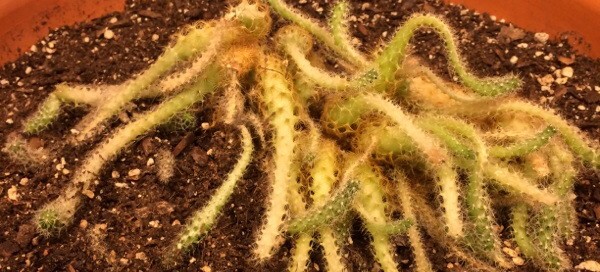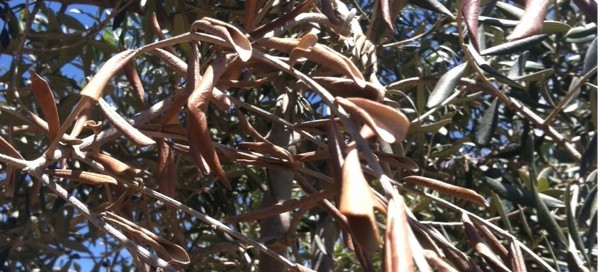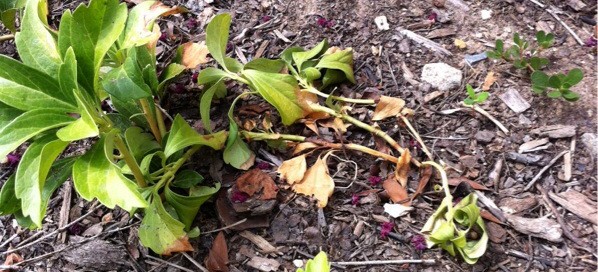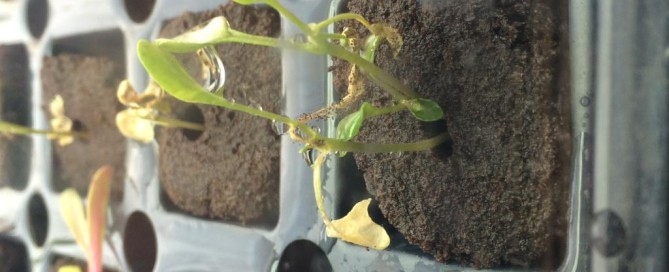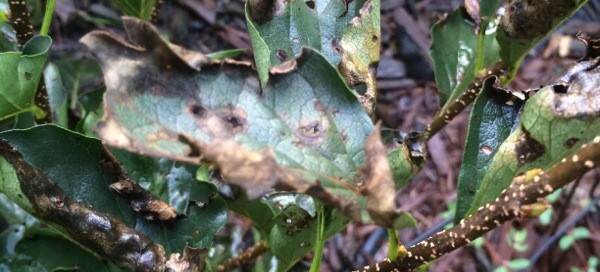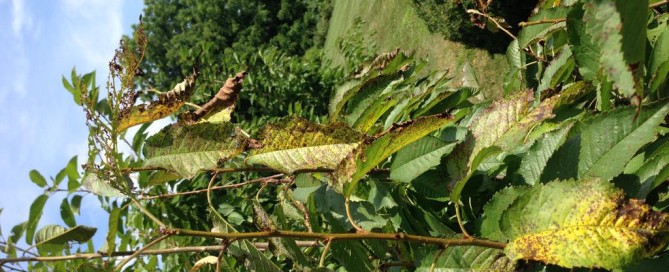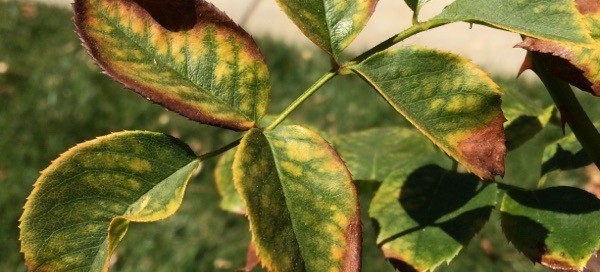Mildew
It appears to be a type of Mildew. White fungus grows on parts of genetically susceptible plants during seasonal weather conditions that favor its development (in particular dried out root zones in combination with summer dews or fogs or other instances of humidity). Put a few affected leaves in a baggie to show a horticulturist at your local garden center for confirmation of the issue.
It appears that the plant you are describing is the Snail Vine or Vigna caracalla. This plant does not take cold so maybe that is why yours is losing it's leaves. The webbing could be a sign of mites. You should collect and dispose of the affected plant parts to prevent the spread of the mildew and the mites. As far as the "puppy" sacs go, we are not sure what those are exactly...
Here is a link that you might find helpful:
http://www.monrovia.com/plant-catalog/plants/3589/snail-vine/
The history of the plant is interesting....
